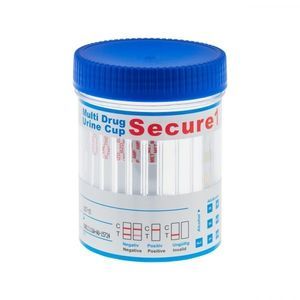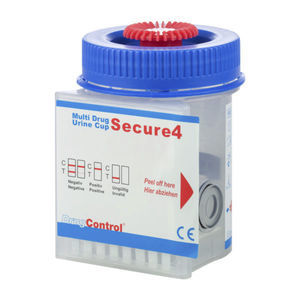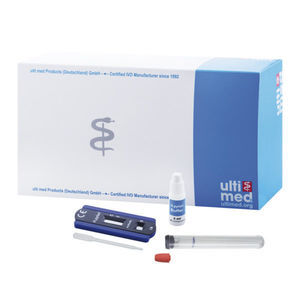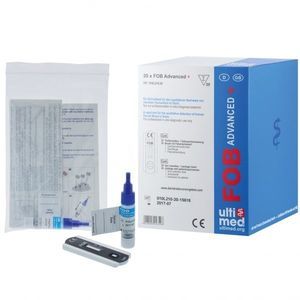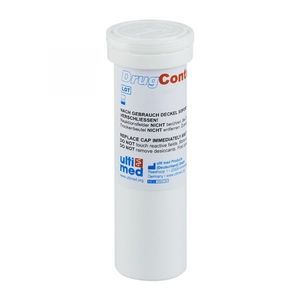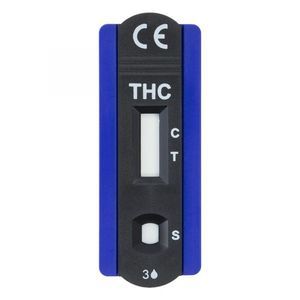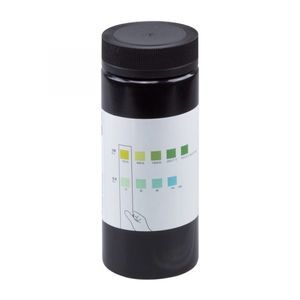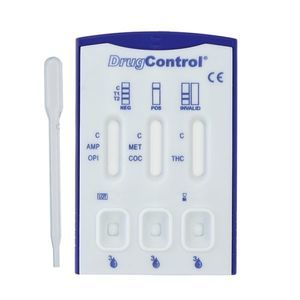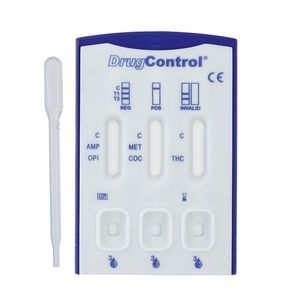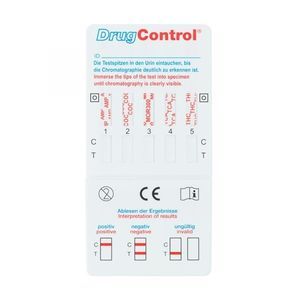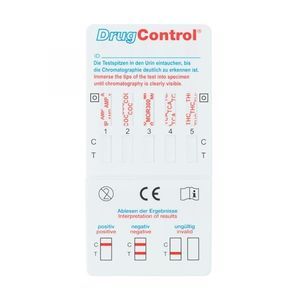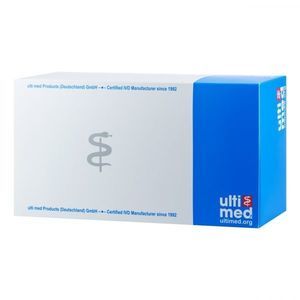
- Laboratory
- Laboratory medicine
- Rapid drug detection test
- ulti med Products (Deutschland)
Rapid drug detection test DrugControl ETGalcoholurineclinical
Add to favorites
Compare this product
Characteristics
- Application field
- drug detection
- Tested parameter
- alcohol
- Sample type
- urine, clinical
- Analysis mode
- chromatographic immunoassay
- Format
- cassette
Description
The DrugControl ETG Test is a rapid chromatographic immunoassay for the detection of Ethyl-β-D-Glucuronide in human urine at the cut-off concentration of 500 ng/mL. The following table lists compounds that are positively detected in urine by the DrugControl ETG Test at 5 minutes.
This assay provides only a qualitative, preliminary, analytical test result. A more specific alternate chemical method must be used in order to obtain a confirmed analytical result. Gas chromatography/mass spectrometry (GC/MS) is the preferred confirmatory method. Clinical consideration and professional judgment should be applied to any drug of abuse test result, particularly when preliminary positive results are used.
SUMMARY
Ethyl Glucuronide (ETG) is a metabolite of ethyl alcohol which is formed in the body by glucuronidation following exposure to ethanol, such as by drinking alcoholic beverages. It is used as a biomarker to test for ethanol use and to monitor alcohol abstinence in situations where drinking is prohibited, such as in the military, in professional monitoring programs (health professionals, attorneys, airline pilots in recovery from addictions), in schools, in liver transplant clinics, or in recovering alcoholic patients. ETG can be measured in urine up to approximately 80 hours after ethanol is ingested. ETG is a more accurate indicator of the recent exposure to alcohol than measuring for the presence of ethanol itself.
TEST PRINCIPLE
The DrugControl ETG Test is an immunoassay based on the principle of competitive binding. Drugs that may be present in the urine specimen compete against the drug conjugate for binding sites on the antibody.
Catalogs
product catalog 2017
60 Pages
Other ulti med Products (Deutschland) products
Rapid tests
Related Searches
- Assay kit
- Blood rapid diagnostic test
- Rapid lateral flow test
- Immunoassay rapid diagnostic test
- Cassette rapid diagnostic test
- Rapid virus test
- Serum rapid diagnostic test
- Plasma rapid diagnostic test
- Clinical assay kit
- Infectious disease rapid diagnostic test
- Whole blood rapid diagnostic test
- Lateral flow test kit
- Rapid respiratory infection test
- Urine rapid diagnostic test
- Strip detection kit
- COVID-19 rapid diagnostic test
- Strip rapid diagnostic test
- Test strip
- Bacteria rapid diagnostic test
- Urine assay kit
*Prices are pre-tax. They exclude delivery charges and customs duties and do not include additional charges for installation or activation options. Prices are indicative only and may vary by country, with changes to the cost of raw materials and exchange rates.






